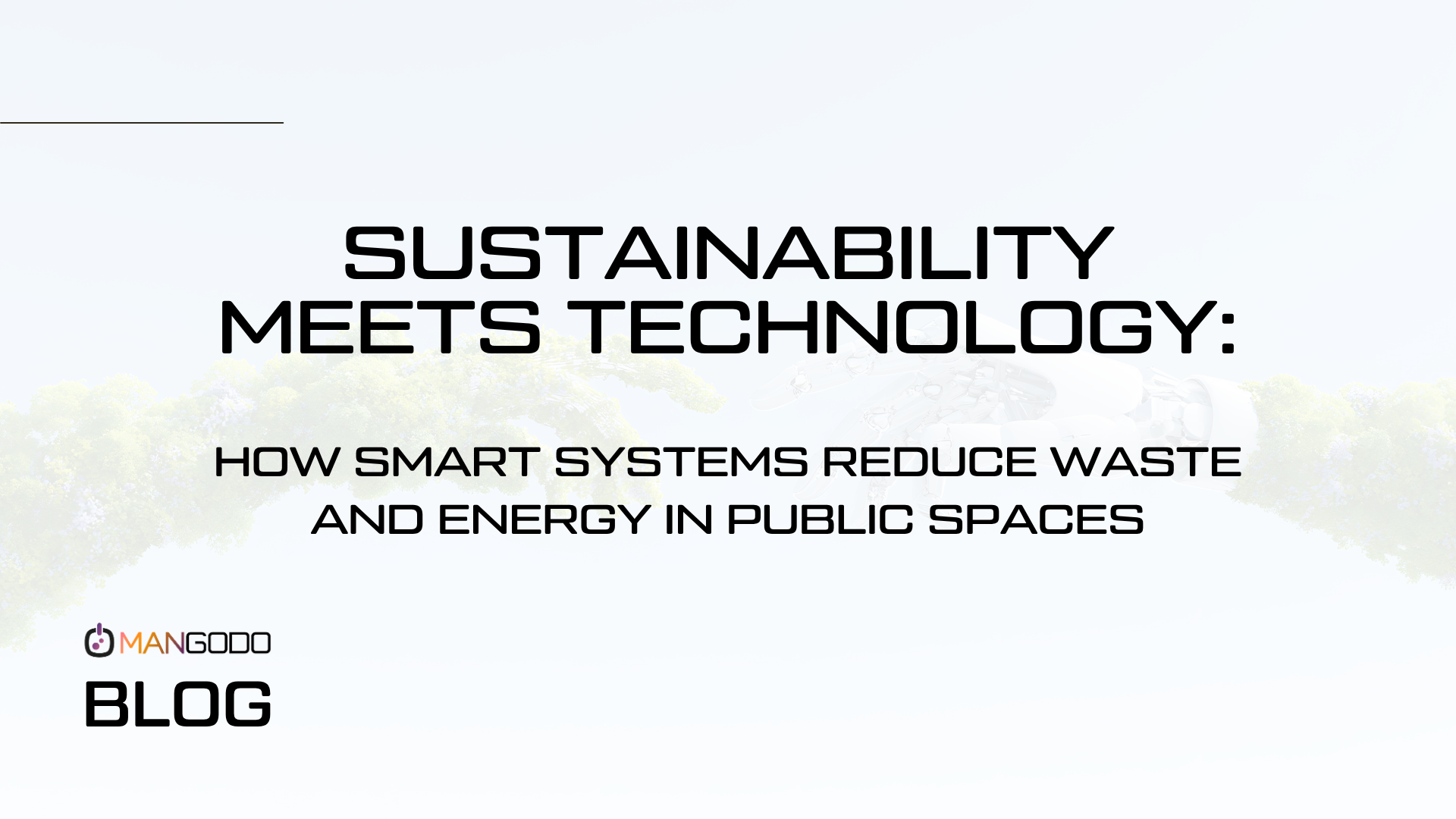Sustainability Meets Technology: How Smart Systems Reduce Waste and Energy in Public Spaces
As cities and organizations race toward a greener future, one message is clear: sustainability and technology can no longer exist in separate worlds. The path to a cleaner planet runs through smart, data-driven systems that make our public spaces not only more efficient—but more responsible.
From airports and hospitals to shopping malls and universities, technology is now at the heart of the global effort to reduce waste and energy use. And the results are already visible.
Rethinking Waste: From Paper to Pixels
One of the simplest yet most impactful changes has come through digitization. The shift from printed materials to digital displays, menus, and signage has eliminated thousands of tons of paper waste across industries.
Airports now update their flight schedules instantly on digital boards. Restaurants offer dynamic digital menus that change based on time or stock availability. Municipalities use large-scale information kiosks instead of paper-based notice boards.
This digital transformation isn’t just convenient—it’s a sustainability milestone that saves both trees and logistics costs.
Smarter Energy, Smarter Spaces
Energy efficiency is another key frontier.
Smart systems today can monitor lighting, screen brightness, and device activity based on real-time environmental data.
For instance:
-
Adaptive digital signage reduces brightness during off-peak hours.
-
Queue management systems optimize crowd flow, minimizing the need for excess lighting and air conditioning in congested areas.
-
Interactive kiosks use low-power modes when idle and activate only when approached.
These small, intelligent adjustments across thousands of devices translate into massive energy savings—turning technology from a consumer into a conservation tool.
The Role of Data in Sustainable Design
Data is the hidden force behind sustainability success stories.
By analyzing how people move through terminals, campuses, or city centers, organizations can:
-
Identify underused areas
-
Optimize heating, cooling, and lighting schedules
-
Reduce unnecessary energy expenditure
Real-time data insights help decision-makers plan infrastructure and staffing more effectively—ensuring resources are used where they matter most.
Circular Thinking: Tech That Evolves, Not Replaces
Another overlooked aspect of sustainability is hardware longevity.
Modern smart systems are built to evolve through software updates rather than frequent replacements. This “upgrade, not discard” model minimizes electronic waste and lowers the carbon footprint of public technologies.
Future-ready platforms ensure that screens, kiosks, and management systems remain relevant for years—without the environmental cost of mass renewal.
Technology with a Conscience
Sustainability is not just a policy—it's a design philosophy.
When technology is built with efficiency in mind, it becomes an ally in the fight against climate change. Smart systems can monitor, adapt, and even predict the needs of the environments they serve.
It’s no longer just about automation; it’s about responsible innovation.
How Mangodo Builds the Future Responsibly
At Mangodo, we believe innovation and sustainability must go hand in hand.
Our smart signage, kiosk, and queue management solutions are designed with efficiency at their core:
-
Cloud-based content delivery reduces waste and maintenance.
-
Adaptive brightness and scheduling features lower energy use.
-
Modular, upgradable hardware ensures longevity and reduces e-waste.
Through our technology, we help airports, campuses, hospitals, and municipalities move toward smarter, greener operations—where digital transformation drives real environmental impact.
Let’s Build Smarter, Cleaner Spaces Together
Sustainability isn’t a future goal—it’s a present responsibility.
📩 Contact Mangodo to explore how smart technologies can make your spaces more efficient, connected, and environmentally conscious.
